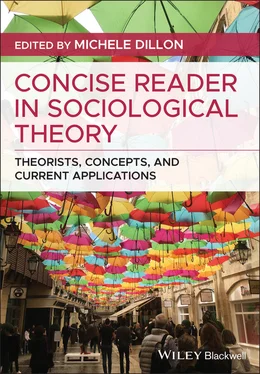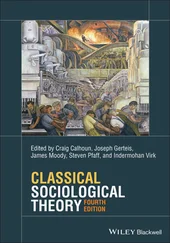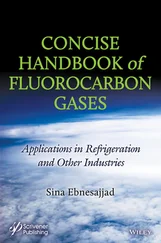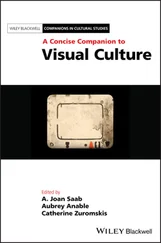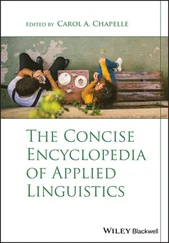[…]
In production, men enter into relation not only with nature. 25 They produce only by co‐operating in a certain way and mutually exchanging their activities. In order to produce, they enter into definite connections and relations with one another and only within these social connections and relations does their relation with nature, 26 does production, take place.
These social relations into which the producers enter with one another, the conditions under which they exchange their activities and participate in the whole act of production, will naturally vary according to the character of the means of production. With the invention of a new instrument of warfare, firearms, the whole internal organization of the army necessarily changed; the relationships within which individuals can constitute an army and act as an army were transformed and the relations of different armies to one another also changed.
Thus the social relations within which individuals produce, the social relations of production, change, are transformed, with the change and development of the material means of production, the productive forces. The relations of production in their totality constitute what are called the social relations, society, and, specifically, a society at a definite stage of historical development , a society with a peculiar, distinctive character. Ancient society, feudal society, bourgeois society are such totalities of production relations, each of which at the same time denotes a special stage of development in the history of mankind.
Capital , also, is a social relation of production. It is a bourgeois production relation , a production relation of bourgeois society. Are not the means of subsistence, the instruments of labour, the raw materials of which capital consists, produced and accumulated under given social conditions, in definite social relations? Are they not utilized for new production under given social conditions, in definite social relations? And is it not just this definite social character which turns the products serving for new production into capital ?
Capital consists not only of means of subsistence, instruments of labour and raw materials, not only of material products; it consists just as much of exchange values . All the products of which it consists are commodities . Capital is, therefore, not only a sum of material products; it is a sum of commodities, of exchange values, of social magnitudes .
[…]
The interests of the capitalist and those of the worker are, therefore, one and the same, assert the bourgeois and their economists. Indeed! The worker perishes if capital does not employ him. Capital perishes if it does not exploit labour, 27 and in order to exploit it, it must buy it. The faster capital intended for production, productive capital, increases, the more, therefore, industry prospers, the more the bourgeoisie enriches itself and the better business is, the more workers does the capitalist need, the more dearly does the worker sell himself.
The indispensable condition for a tolerable situation of the worker is, therefore, the fastest possible growth of productive capital .
But what is the growth of productive capital? Growth of the power of accumulated labour over living labour. Growth of the domination of the bourgeoisie over the working class. If wage labour produces the wealth of others that rules over it, the power that is hostile to it, capital, then the means of employment [Beschäftigungsmittel ], that is, the means of subsistence, flow back to it from this hostile power, on condition that it makes itself afresh into a part of capital, into the lever which hurls capital anew into an accelerated movement of growth.
To say that the interests of capital and those of labour 28 are one and the same is only to say that capital and wage labour are two sides of one and the same relation. The one conditions the other, just as usurer and squanderer condition each other .
As long as the wage‐worker is a wage‐worker his lot depends upon capital. That is the much‐vaunted community of interests between worker and capitalist.
Even the most favourable situation for the working class, the most rapid possible growth of capital , however much it may improve the material existence of the worker, does not remove the antagonism between his interests and the interests of the bourgeoisie, the interests of the capitalist. Profit and wages remain as before in inverse proportion .
If capital is growing rapidly, wages may rise; the profit of capital rises incomparably more rapidly. The material position of the worker has improved, but at the cost of his social position. The social gulf that divides him from the capitalist has widened.
Finally:
To say that the most favourable condition for wage labour is the most rapid possible growth of productive capital is only to say that the more rapidly the working class increases and enlarges the power that is hostile to it, the wealth that does not belong to it and that rules over it, the more favourable will be the conditions under which it is allowed to labour anew at increasing bourgeois wealth, at enlarging the power of capital, content with forging for itself the golden chains by which the bourgeoisie drags it in its train.
1B Karl Marx and Frederick Engels from Economic and Philosophical Manuscripts of 1844
Original publication details: Karl Marx, from “Economic and Philosophical Manuscripts of 1844” in Karl Marx and Frederick Engels: Volume 3, Marx and Engels 1843–44. International Publishers, 1975, pp. 235–239, 246–248, 271–277, 322–323, 324. Reproduced with permission of International Publishers.
||I, 1| Wages are determined through the antagonistic struggle between capitalist and worker. Victory goes necessarily to the capitalist. The capitalist can live longer without the worker than can the worker without the capitalist. Combination among the capitalists is customary and effective; workers’ combination is prohibited and painful in its consequences for them. Besides, the landowner and the capitalist can make use of industrial advantages to augment their revenues; the worker has neither rent nor interest on capital to supplement his industrial income. Hence the intensity of the competition among the workers. Thus only for the workers is the separation of capital, landed property, and labour an inevitable, essential and detrimental separation. Capital and landed property need not remain fixed in this abstraction, as must the labour of the workers.
The separation of capital, rent, and labour is thus fatal for the worker .
The lowest and the only necessary wage rate is that providing for the subsistence of the worker for the duration of his work and as much more as is necessary for him to support a family and for the race of labourers not to die out. The ordinary wage, according to Smith, is the lowest compatible with common humanity, that is, with cattle‐like existence.
The demand for men necessarily governs the production of men, as of every other commodity . Should supply greatly exceed demand, a section of the workers sinks into beggary or starvation. The worker’s existence is thus brought under the same condition as the existence of every other commodity. The worker has become a commodity, and it is a bit of luck for him if he can find a buyer. And the demand on which the life of the worker depends, depends on the whim of the rich and the capitalists. Should supply ex[ceed] 1 demand, then one of the consti[tuent] parts of the price – profit, rent or wages – is paid below its rate , [a part of these] factors is therefore withdrawn from this application, and thus the market price gravitates [towards the] natural price as the centre‐point. But (1) where there is considerable division of labour it is most difficult for the worker to direct his labour into other channels; (2) because of his subordinate relation to the capitalist, he is the first to suffer.
Читать дальше
